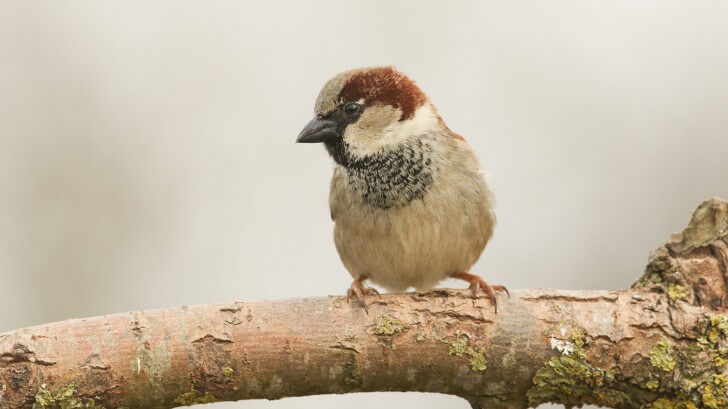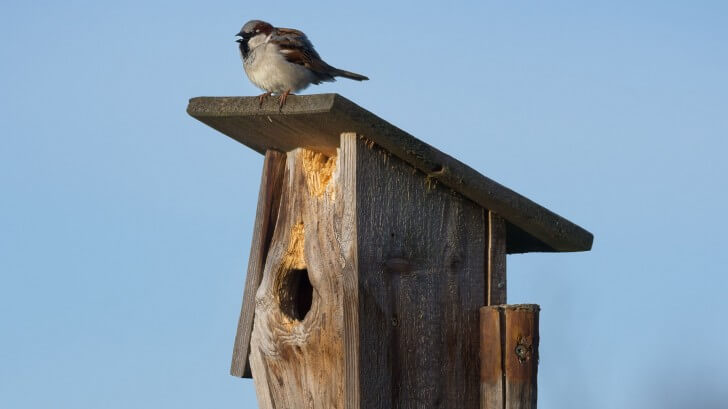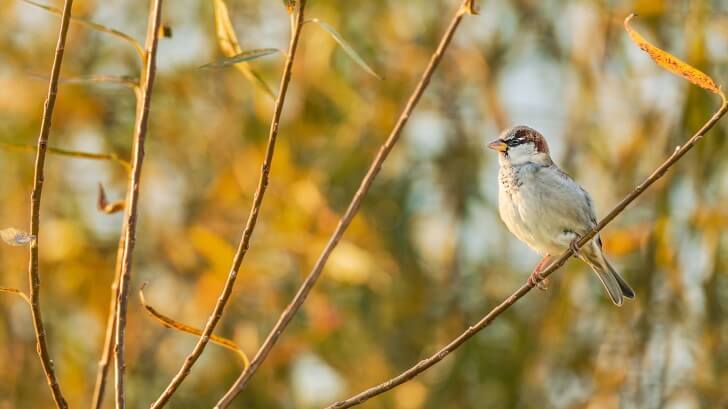BBC Earth newsletter
BBC Earth delivered direct to your inbox
Sign up to receive news, updates and exclusives from BBC Earth and related content from BBC Studios by email.
Birds
The house sparrow is the most widely distributed wild bird in the world, found on every continent except Antarctica.
It is also perhaps the species most associated with human dwellings, both urban and rural. Although sparrow populations have gradually declined across the world, and rapidly in Britain, the house sparrow is an iconic part of many countries. The ‘cheep cheep’ of a flutter of sparrows in a bush, shrub or tree, roosting in eaves, or splashing around in puddles is a familiar and loved sight in the UK.
It is strange then, that, until recently, very little was known about the evolutionary history of these birds. It was thought that the species originated in the Middle East, and then spread across Europe and Asia. Later, the bird was introduced to Australia and North America. Eugene Schieffelin, the man who attempted to introduce all the birds in William Shakespeare’s plays to North America in the late 19th century, may have been responsible for bringing the house sparrow to the States.

Mark Ravinet, an evolutionary biologist at the University of Oslo, became interested in the origin story of the house sparrow (Passer domesticus) when he realised their evolution had not been properly addressed. In a new paper, published in The Royal Society, he has shed significant light on the adaptation and evolutionary history of a bird we take for granted. His research came up with two striking results.
It was shocking to see a very high level of difference between these commensal and wild lineages. That was the first indication that there was something quite striking going on here."
It was already clear that sparrows may have adapted to live alongside humans, because of their association over time. “If you look at a map of the distribution of the house sparrow, beyond its native range, it’s been introduced to North America, South Africa, Australia. It doesn’t take long to join the dots and realise the people who introduced it were Victorians in the expansion of the the British Empire,” said Ravinet. The British thought of the sparrow as a kind of ‘garden companion’, he says, which would make them feel at home while abroad.
It was speculated that the species diverged with the spread of agriculture and Ravinet’s team formally tested the theory for the first time. “I wouldn't go as far as to say that my paper definitively proves it, but certainly it strongly suggests that that is the case, that they have spread with agriculture,” said Ravinet.

The next task was to compare the DNA of the house sparrow with the Bactrianus sparrow, a wild sub-species of the house.
“When I visualised it, I expected them to be really similar, I thought there would be some differences but relatively minor,” said Ravinet. “It was shocking to see a very high level of difference between these commensal and wild lineages. That was the first indication that there was something quite striking going on here. That led us down this pathway of starting to investigate in a bit more detail what possibly could have happened to drive this.”
One cold, dark evening Ravinet sat in his office and started the analysis. He found two genes that were different.
“I Googled the first one and realised it was involved in skull morphology and that got me really excited,” he said. “As soon as I saw the other one I recognised it because it’s involved in dogs and humans. I checked a closely related species and those genes are very far apart. It suggested that something special might have happened in the house sparrow.”
He double-checked, and checked again in the morning, before telling his colleagues what he had discovered.
The two genes he found were COL11A—which regulates craniofacial and skull development - and AMY2A, part of the amylase gene family which has previously been linked to adaptation to high-starch diets in humans and dogs.

A robust thicker skull may have something to do with a transition in diet towards agricultural-based grains. “We know skull shape is likely to be an important adaptation to feeding on human resources,” he said.
“Most sparrows feed on insects when they're nursing their young. House sparrows tend to feed on grain throughout the year when they’re not breeding. It’s hard to get an idea what wild sparrows might have lived like, but probably on wild seeds, grasslands.”
These results are only the beginning of a much bigger project. Ravinet and his team are currently following up on findings. One student is CT-scanning about a 100 skulls to identify differences in morphology. Ravinet will also be sequencing the genomes of all the different species of sparrows.
Still, this early research makes you think differently about the common, very familiar sparrow outside your window, and how our evolutionary histories are intimately intertwined.
Featured image © Sandra Standbridge | Getty
This article was originally published in November 2018.